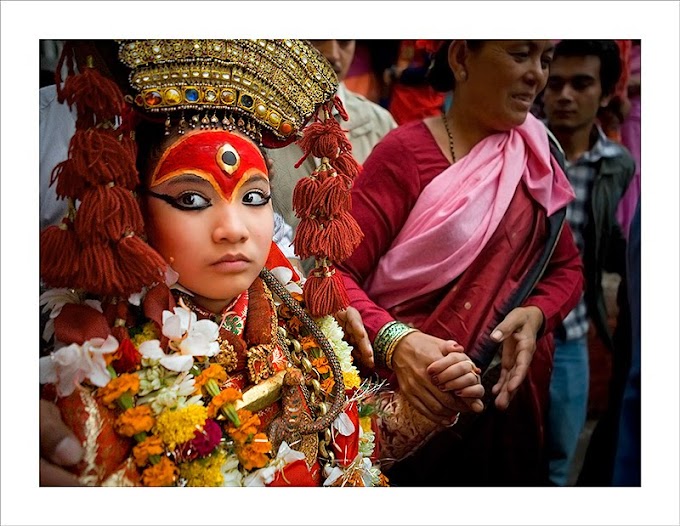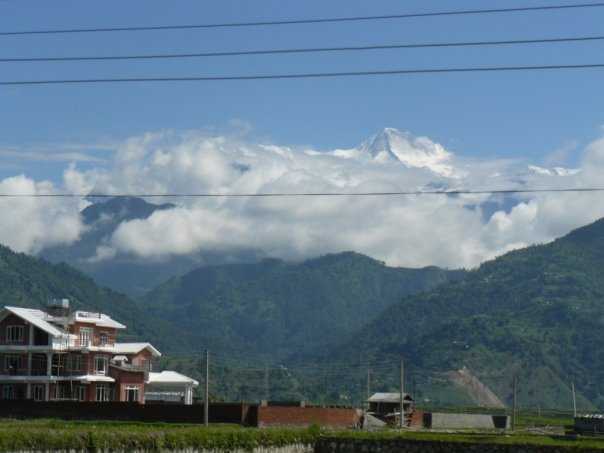Pokhara Sub-Metropolitan City (Nepali: पोखरा उपमहानगरपालिका Pokhara Upa-Mahānagarpālikā) is the second largest city of Nepal with 264,991 inhabitants and is situated about 200 km west of the capital Kathmandu.It serves as the headquarters of Kaski District, Gandaki Zone and the Western Development Region. Pokhara is one of the most popular tourist destinations in Nepal.Three out of the ten highest mountains in the world — Dhaulagiri, Annapurna I and Manaslu or Lamjung himal — are situated within 30 miles (linear distance) of the city, so that the northern skyline of the city offers a very close view of the Himalayas.Due to its proximity to the Annapurna mountain range, the city is also a base for trekkers undertaking the Annapurna Circuit through the ACAP region of the Annapurna ranges in the Himalayas.
After the annexation of Tibet by China leading to the Indo-China war in 1962, the old trading route to India from Tibet through Pokhara became defunct. Today only few caravans from Mustang arrive in Bagar. In recent decades, Pokhara has become a major tourist destination in South Asia mainly for adventure tourism and the base for the famous Annapurna Circuit trek. Thus, a major contribution to the local economy comes from the tourism and hospitality industry.There are two 5-star hotels and approximately 305 other hotels that includes five 3-star, fifteen 2-star and non-star hotels in the city.










Pokhara is quite a modern city; however, many medieval era temples (Barahi temple, Bindhyabasini, Bhadrakali, Sitaldevi, Gita mandir temple, Bhimsen temple) and old newari houses are still a part of the city (Bagar, Bindhyabasini, Bhairab Tole, etc.). The modern commercial city centres are at Chipledhunga and Mahendrapul (recently renamed as Bhimsen Chowk).
The city promotes two major hilltops as its viewpoints to view the city and surrounding panaroma, World Peace Pagoda built in 1996 across the southern shore of Phewa lake and Sarangkot which is located northwest of the city. In February 2004, International Mountain Museum (IMM)was opened for public in Ratopahiro to boost city's tourism attractions. Other museums in the city are Pokhara Regional Museum, an ethnographic museum, Annapurna Natural History Museum which houses preserved specimens of flora and fauna, and contains particularly extensive collection of the butterflies, found in the Western and (ACAP) region of Nepal; and Gurkha Museum featuring history of the Gurkha Soldiers.
Since 1990s Pokhara has experienced rapid urbanization and as a result service and industries sectors have increasingly contributed to the local economy[50] overtaking the traditional agriculture. The major contributors to the economy of Pokhara are manufacturing and service sector including tourism; agriculture and the foreign and domestic remittances. Tourism, service sector & manufacturing contributes approximately 58% to the economy, remittances about 20% and the agriculture nearly 16%.
Rivers and lakes in and around Pokhara
Phewa Lake
Begnas Lake
Rupa Lake
Seti Gandaki (Seti River)
Gude Lake
Neurani Lake
Deepang Lake
Maidi Lake
Khastey Lake
Bijayapur Khola
Yamdi Khola
Fedi Khola
Kau Khola
Fusre Khola
Bagadi & Gaduwa (flows to Seti river)
Harpan Khola (main source of Phewa laka)
Pani Khola
Kali Khola
Bhalam Khola
Bhurjung Khola
Transportation
Public transit: Pokhara has several bus routes, mainly running the length of the city from north to south as well as east to west as well to the nearby villages and towns. The public transport mainly consists of buses, vans (locally known as micro-bus) and metered-taxis (frequently meter rule is ignored and meter tampering is common, so the locals almost always bargain with the driver before riding the taxi).
Intercity connections: Pokhara is well connected to rest of the country through permanent road and air links. The main mode of transportation are public buses and the Purano Bus Park is the main hub for buses plying country wide. The all-season airport with regular flights to Kathmandu, Mustang are operated by various domestic and a few international airlines. Pokhara Airport is set to be upgraded into an international airport.
Climate
The climate of the city is sub-tropical; however, the elevation keeps temperatures moderate: summer temperatures average between 25 to 35 °C, in winter around - 2 to 15 °C. Pokhara and nearby areas receive a high amount of precipitation. Lumle, 25 miles from the Pokhara city center, receives the highest amount of rainfall (> 5600 mm/year or 222 inches/year) in the country.Snowfall is not observed in the valley, but surrounding hills experience occasional snowfall in the winter. Summers are humid and mild; most precipitation occurs during the monsoon season (July - September). Winter and spring skies are generally clear and sunny.
References:
Photo/content Source : http://en.wikipedia.org/wiki/Pokhara





